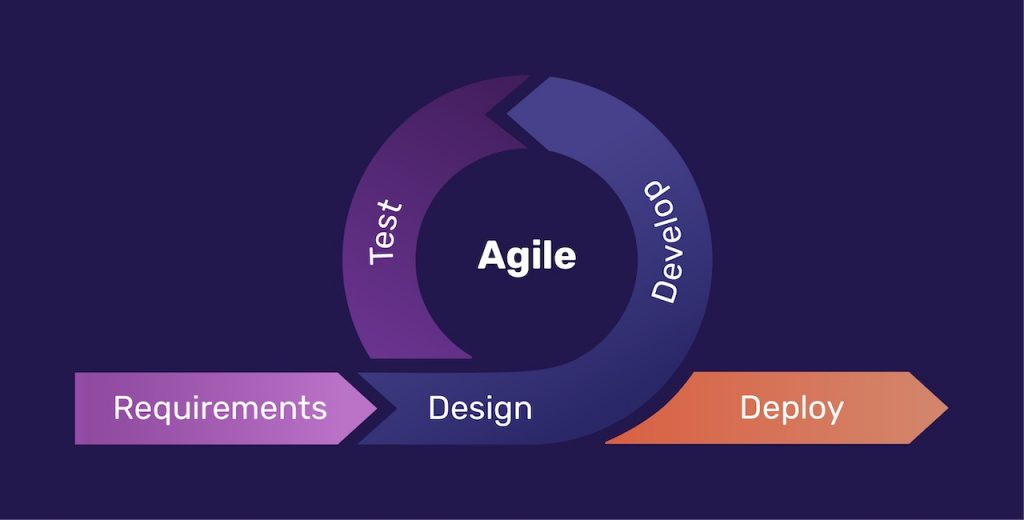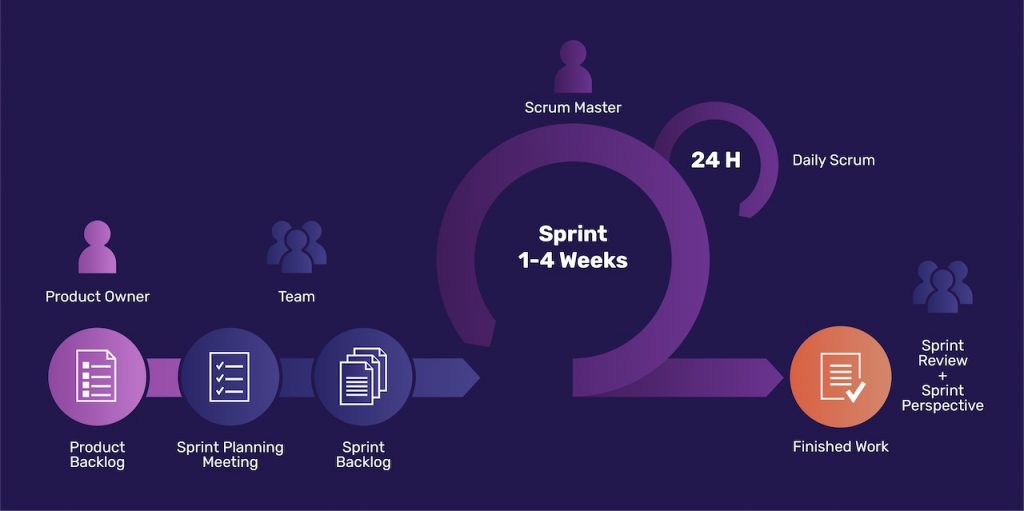What Is Nearshore Development and When to Use It
Is the sky-high cost of software development hindering your business growth? If you're searching for ways to build high-quality custom solutions...
4 min read
Written by Keith Shields, Jan 29, 2021

For a software development project to be successful, it needs to be effectively managed using the best software development methodology for its particulars. But how do you know the right methodology to use? There are a lot of options, each with strengths and weaknesses. And while some get a lot of buzz at times, they may not be the right fit for your project’s needs. In this article, we’ll break down four of the most popular software development methodologies to help you decide what to use for your next project.
Waterfall development methodology, also called the Waterfall Method, is one of the older software methodologies. It’s often considered to be the most traditional method of development.

Waterfall uses a rigid linear model with sequential phases for development: requirements, design, development, testing, release, maintenance. Each phase must be complete in its entirety before progressing to the next step.
Waterfall works most effectively when projects have clear objectives and stable, well-understood requirements. It’s also helpful to use when the project team and project manager are less experienced or frequently change composition. Given the linear nature of Waterfall, it’s much easier for people to understand the current state and progress and to jump in where needed than it is with some of the other development methodologies. Waterfall also works best with shorter-duration projects.
Agile development methodology has gotten a lot of buzz in recent years, and many companies have pushed to use it. The intent of Agile is to release smaller units of functionality often, as opposed to the “big bang” of Waterfall. A number of other popular software development methodologies have been established using an Agile framework.

The Agile methodology uses shorter cycles of requirements and development which evolve through the cross-functional team’s collaboration. This leads to releasing products faster and a more efficient development process that integrates learning and facilitates change.
Agile is most effective in smaller organizations where there is a dedicated team. It’s useful when a project is considered higher-risk due to less up-front clarity and project definition. Agile is also helpful for longer-duration projects that can be broken into smaller units of work.
Lean Software Development is an Agile framework designed to optimize development time and resources and to eliminate waste. The goal is to deliver only the minimum product requirements that meet the user’s core pain point(s). It’s often referred to as the Minimum Viable Product (MVP) strategy.

With Lean development, a team works to release an app to the market that meets users’ minimum requirements. Once the app is in the hands of the users, the team learns directly from users what they like and don’t like, and what features need to be added to make the product even more useful. Development is iterative based on user feedback.
Lean development is especially effective on a limited budget when a product or app is new to a market and more robust user feedback is desired.
Scrum is another popular software engineering methodology that uses an Agile framework. In fact, it’s sometimes considered the most widely-preferred Agile approach.

Scrum is an Agile framework used for developing, delivering, and sustaining complex projects. It establishes a set of prescribed team roles and meetings the team will hold on a regular cadence during boxes of time, or sprints.
Scrum is very nimble, so it’s quite effective when requirements are not clear or change frequently. It does require a dedicated team with some specific roles (including a Product Owner, Scrum Master, and team members), so it’s important for there to be buy-in for this approach in the organization.
When you choose a partner, you’ll want to be sure they have the technical chops to build your app, as well as the knowledge and expertise to run the project effectively. They should understand the different software development methodologies and be able to clearly articulate what they use and why. Both technical ability and effective software development methodologies are necessary for a successful and efficiently-run project.
Want to learn more about our development process? Get in touch.
You might also like:
Subscribe to our newsletter.

Is the sky-high cost of software development hindering your business growth? If you're searching for ways to build high-quality custom solutions...

This article dives into answering the most common questions about a software proof of concept, including why you need one and how to go about writing...

Imagine streamlining your inventory process with a custom app, or boosting customer engagement with a loyalty program. Outsourcing software...
Post
Share